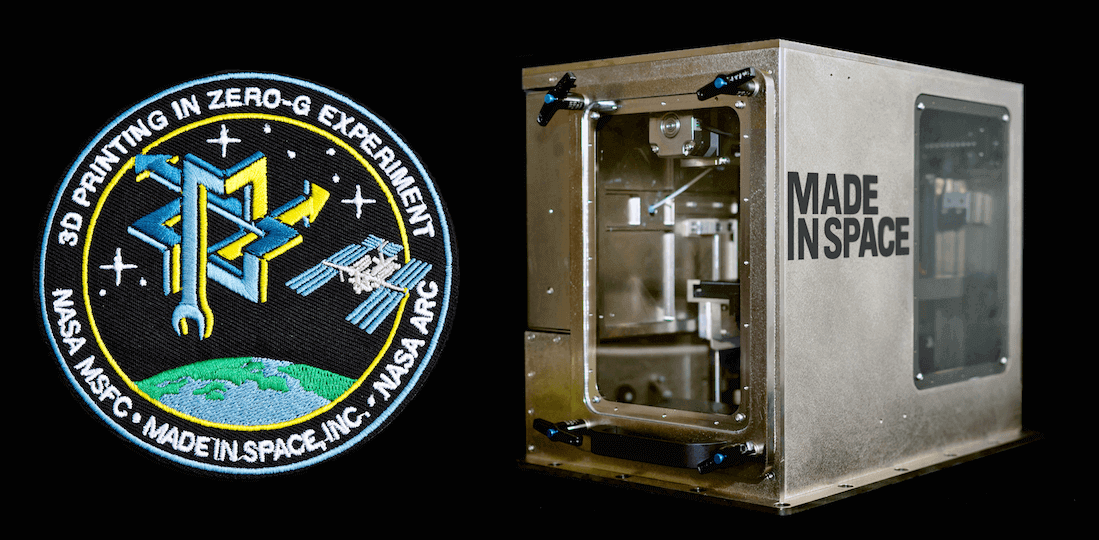One small print for a man, a giant leap for a 3D printing: The International Space Station’s 3D printer has manufactured the first 3D printed object in space, paving the way to future long-term space expeditions.
NASA astronaut Barry “Butch” Wilmore, Commander aboard the ISS, installed the printer on Nov. 17 and conducted the first calibration test print. The ground control team sent commands to realign the printer. A second calibration test followed on Nov. 20, then the printer was properly set up. On Nov. 24, ground controllers sent the printer the command to make the first printed part: a faceplate of the extruder’s casing. The 3D printer uses additive manufacturing to heat a relatively low-temperature plastic filament and extrude it one layer at a time to build the part defined in the design file sent to the machine.
On the morning of Nov. 25, Wilmore removed the part from the printer and inspected it. Part adhesion on the tray was stronger than anticipated, which could mean layer bonding is different in microgravity, a question the team will investigate as future parts are printed. “This is the first time we’ve ever used a 3D printer in space, and we are learning, even from these initial operations”, said Niki Werkheiser, project manager for the International Space Station 3D Printer at NASA. “As we print more parts we’ll be able to learn whether some of the effects we are seeing are caused by microgravity or just part of the normal fine-tuning process for printing. When we get the parts back on Earth, we’ll be able to do a more detailed analysis to find out how they compare to parts printed on Earth.”
The 3D Printing in Zero-G Technology Demonstration on the space station aims to show additive manufacturing can make a variety of 3D printed parts and tools in space. The first object 3D printed in space, the printhead faceplate, is engraved with names of the organizations that collaborated on this space station technology demonstration: NASA and Made In Space, Inc., the space manufacturing company that worked with NASA to design, build and test the 3D printer. Made In Space is located on the campus of NASA’s Ames Research Center in Moffett Field, California.

“We chose this part to print first because, after all, if we are going to have 3D printers make spare and replacement parts for critical items in space, we have to be able to make spare parts for the printers,” Werkheiser said. “If a printer is critical for explorers, it must be capable of replicating its own parts, so that it can keep working during longer journeys to places like Mars or an asteroid. Ultimately, one day, a printer may even be able to print another printer.”
The first objects built in space will be returned to Earth in 2015 for detailed analysis and comparison to identical ground control samples made on the flight printer after final flight testing earlier this year at, NASA’s Marshall Center prior to launch. The goal of this analysis is to verify that the 3D printing process works the same in microgravity as it does on Earth.
License: The text of "This is the first 3D printed piece from the ISS" by All3DP is licensed under a Creative Commons Attribution 4.0 International License.